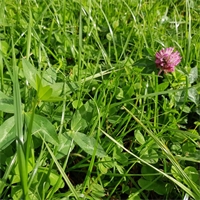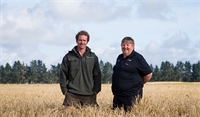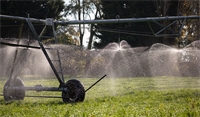28Aug
Healthy soil, plants and animals
Words and image supplied by Ballance.
Micronutrients in soil are taken up by pasture and crops, then consumed by stock. Some, such as copper, are essential for both plants and animals, while others are only needed for either plants or animals (see Table 1).
Table 1 Essential micronutrients for plants and animals
|
|
Plant
|
Animal
|
|
Boron (B)
|
P
|
-
|
|
Cobalt (Co)
|
-
|
P
|
|
Copper (Cu)
|
P
|
P
|
|
Iodine (I)
|
-
|
P
|
|
Iron (Fe)
|
P
|
P
|
|
Manganese (Mn)
|
P
|
P
|
|
Molybdenum (Mo)*
|
P
|
P
|
|
Zinc (Zn)
|
P
|
P
|
|
Selenium (Se)
|
-
|
P
|
*Mo is mainly required by plants. Animals’ requirements of Mo is very low, so deficiency is unlikely.
Detecting micronutrient deficiencies
The plant availability of soil micronutrients depends on soil pH, parent material, age of soil and several other factors. Even if micronutrient levels in the soil are adequate, pasture may not be able to take up the micronutrients it needs.
For this reason, soil testing is not a reliable way of measuring micronutrient levels for pasture, and deficiencies in plants are best detected by herbage testing. Herbage testing is also reliable for checking micronutrient levels for animal health, and can be complemented by testing micronutrient levels in animal blood and tissue samples.
Two types of herbage tests are commonly used in pastoral farming:
- Clover-only: Clover is the ‘canary in the mine’ for pasture. Its shallow rooting depth makes it a poorer competitor for nutrients than grasses, so it shows signs of nutrient deficiency sooner. As well as macronutrient levels, a clover-only test can examine levels of boron and molybdenum – key micronutrients for vigorous clover growth, and therefore for improving overall pasture quality.
- Mixed pasture: This test is taken across a transect in a paddock, taking a broader selection of species in the sward for the sample. The results will demonstrate the nutrient value of what stock are actually eating. It can also be analysed to measure other feed values such as nitrate-nitrogen levels, protein content, starch levels and other feed quality tests.
Herbage testing is generally timed prior to the micronutrient animal demand, to allow time for fertiliser application. Late spring is the time to test for cobalt in anticipation of weaning, selenium is usually measured in spring before mating and copper in early April, before peak demand by deer in autumn and winter, when pasture is less able to meet animal need.
Levels in the herbage can vary throughout the year based on pasture uptake and growth, so it is important to take this into consideration when analysing test results.
Address deficiency
A well planned fertiliser programme can elevate micronutrient levels in pasture to support grazing stock. Products such as NutrixMax Selenium 1%, NutriMax Copper 25% and Nutrimax Cobalt 10% make micronutrients very easy to incorporate into fertiliser applications.
Serious deficiency requires direct-to-animal supplementation as well as correction of micronutrient levels in pasture. If a factor, such as pH, which is not immediately rectifiable is affecting micronutrient availability, consulting a vet or farm advisor for direct-to-animal solutions may be a better option.
For more support, talk to your Ballance Nutrient Specialist or Ruralco On-Farm Account Manager.
Related

High-energy red clover delivers a double gain for farmers looking to improve both animal performance...
Read More

“Connected Farm” is Ultimate Broadband’s new service and it promises to take on farm Internet con...
Read More

For the next three months, we will look at the following: autumn sown arable crops, barley grass con...
Read More

Transform a glass jar into a chic statement piece with this easy DIY yarn-wrapping technique.
Read More

Right now, on dairy farms around the country, farmers are managing feed, animals, budgets, machinery...
Read More

As the rural communities of New Zealand grapple with the challenges posed by extreme weather events ...
Read More